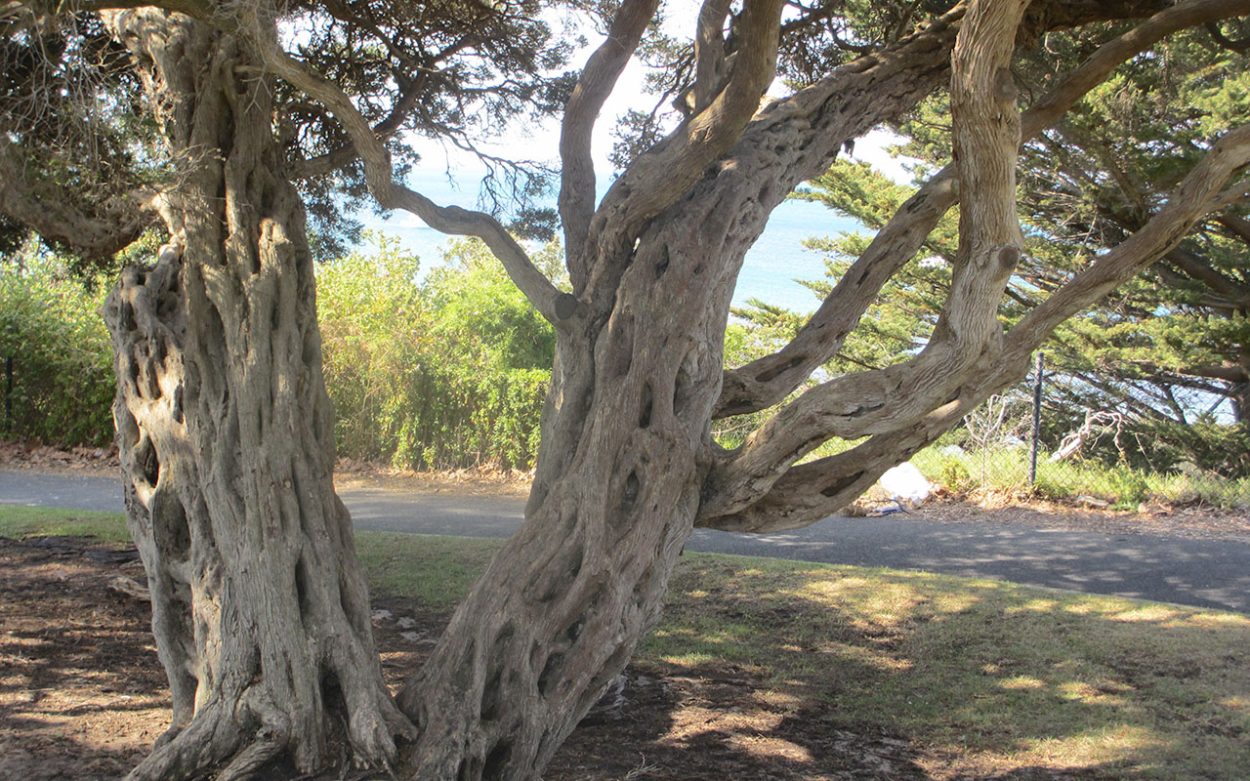By Jane Byrne
SANDY beaches, rugged cliffs and the twisting, somewhat haunting Moonah trees are natural features many imagine when they visualise the southern Mornington Peninsula, an area loved by holidaymakers and residents.
Not only are coastal moonah woodland areas visually stunning, but they perform an important function. They help stabilise dune systems and prevent erosion caused by climate and sea level changes that threaten our coastal communities. Many of the moonah trees and adjacent vegetation communities are extremely old.
With less than eight per cent of its original distribution remaining, coastal moonah woodlands are listed as a threatened community under the Flora and Fauna Guarantee Act 1988 and need support.
Rather than sit idly by and let these iconic plant communities disappear, People and Parks Foundation, Parks Victoria, Mornington Peninsula Shire, St Joseph’s Primary School Sorrento, St Mary’s Star of the Sea Parish, Southern Peninsula Indigenous Flora and Fauna Association, the Nepean Conservation Group Inc and other community members have created a Moonah NatureWise Community program for the southern peninsula.
This highly engaging cross sector program encourages and supports people to “nature dose” in ways that help to restore coastal moonah woodland areas. Nature dosing is both connecting with, and caring for, nature, for at least two hours a week, for healthier people, places and planet.
Alison Hill, managing director of People and Parks Foundation, says Moonah NatureWise “aims to deliver multiple benefits, including environmental outcomes, health and wellbeing outcomes, and a broader, deeper community sense of agency and connection to place, in the face of biodiversity loss, climate change and, for many, eco-anxiety”.
The program on the peninsula will include restoring moonah woodlands, enhancing and celebrating through arts and events in such places as school grounds, community areas and, potentially, on private properties.
Founding partner school, St Joseph’s Primary School, Sorrento, will be supported to connect with and protect remnants of moonah woodlands and to restore and celebrate their own pockets of moonahs on or near their school, including in the parish grounds. School households will be encouraged to support the program, including considering what can be done at home to protect, nurture and promote the health of the local environment, and themselves, through regular nature dosing.
St Joseph’s principal Monica O’Shannassy said the school was thrilled to be part of this program. “It aligns with the high priority we place on sustainability, conservation and wellbeing. It will continue the work we have been doing as a three-star ResourceSmart School, particularly in the area of biodiversity. “We are an active school and enjoy propagating indigenous plants and working with Parks Victoria rangers at Point Nepean National Park, with Friends of Rye Foreshore and the Nepean Conservation Group.”
While much of the initial focus will be on sites within the Point Nepean National Park and Mornington Peninsula Shire’s Police Point park, there is a great opportunity to take the moonah program community-wide, provided that sufficient money can be raised. Anyone interested in supporting the restoration, enhancement and celebration of these iconic plant communities can donate via the People and Parks Foundation website. Donations are tax deductible.
Gidja Walker, president of Southern Peninsula Indigenous Flora and Fauna Association (SPIFFA), hopes that the program will provide a greater understanding of protection for and connection with our unique landscape.
To get involved in restoring coastal moonah woodlands contact Alison Hill, managing director, People and Parks Foundation, on 040 077 0502, email alison.hill@peopleandparks.org; Gidja Walker, gidjawalker@gmail.com; or Jane Byrne, sustainability and visual arts teacher, St Joseph’s, Sorrento, 040 109 1273, jbyrne@sjsorrento.catholic.edu.au
First published in the Mornington News – 4th March 2024
Add A Comment




